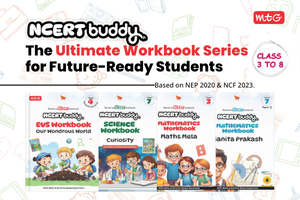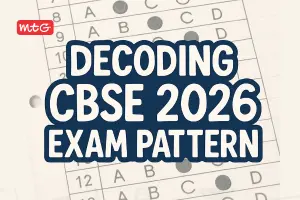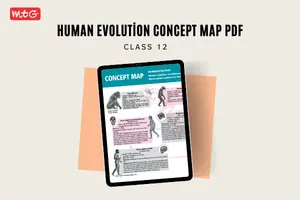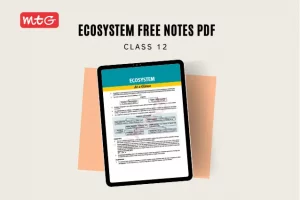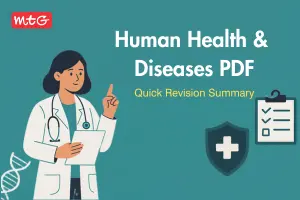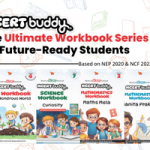
The CBSE Class 11 Biology syllabus covers a wide range of topics that help students gain a deeper understanding of living organisms and their interactions with the environment. Biology Syllabus provides information on CBSE Biology topics and sub-topics along with the marks distribution of all chapters. CBSE Syllabus for Class 11 Biology for the academic year 2025-26 is provided here. It covers all the important topics and subtopics of CBSE Biology along with the marking scheme and time duration. Additionally, the syllabus includes practicals to give students hands-on experience in scientific experimentation and observation.
Check out – CBSE Class 11 Syllabus
CBSE Class 11 Biology Syllabus 2025-26
The table below shows the CBSE Biology unit name, marks distribution, and time allocated to complete each unit of the CBSE 11 Biology Syllabus.
| Unit | Title | Marks |
|---|---|---|
| I | Diversity of Living Organisms | 15 |
| II | Structural Organization in Plants and Animals | 10 |
| III | Cell: Structure and Function | 15 |
| IV | Plant Physiology | 12 |
| V | Human Physiology | 18 |
| Total | 70 |
Trending: Deleted Syllabus of Class 11 From NCERT Textbooks
Recommended: Deleted Syllabus of Class 11 Biology
Unit-I Diversity of Living Organisms
Chapter-1: The Living World
Biodiversity; Need for classification; three domains of life; taxonomy and systematics; concept of species and taxonomical hierarchy; binomial nomenclature
Chapter-2: Biological Classification
Five kingdom classification; Salient features and classification of Monera, Protista and Fungi into major groups; Lichens, Viruses and Viroids.
Chapter-3: Plant Kingdom
Classification of plants into major groups; Salient and distinguishing features and a few examples of Algae, Bryophyta, Pteridophyta, Gymnospermae (Topics excluded – Angiosperms, Plant Life Cycle and Alternation of Generations)
Chapter-4: Animal Kingdom
Salient features and classification of animals, non-chordates up to phyla level and chordates up to class level (salient features and at a few examples of each category). (No live animals or specimen should be displayed.)
Unit-II Structural Organization in Plants and Animals
Chapter-5: Morphology of Flowering Plants
Morphology of different parts of flowering plants: root, stem, leaf, inflorescence, flower, fruit and seed. Description of family Solanaceae
Chapter-6: Anatomy of Flowering Plants
Anatomy and functions of tissue systems in dicots and monocots.
Chapter-7: Structural Organisation in Animals
Morphology, Anatomy and functions of different systems (digestive, circulatory,respiratory, nervous and reproductive) of frog.
Unit-III Cell: Structure and Function
Chapter-8: Cell-The Unit of Life
Cell theory and cell as the basic unit of life, structure of prokaryotic and eukaryotic cells; Plant cell and animal cell; cell envelope; cell membrane, cell wall; cell organelles – structure and function; endomembrane system, endoplasmic reticulum, golgi bodies, lysosomes, vacuoles,mitochondria, ribosomes, plastids, microbodies; cytoskeleton, cilia, flagella, centrioles (ultrastructure and function); nucleus.
Chapter-9: Biomolecules
Chemical constituents of living cells: biomolecules, structure and function of proteins, carbohydrates, lipids, and nucleic acids; Enzyme – types, properties, enzyme action. (Topics excluded: Nature of Bond Linking Monomers in a Polymer, Dynamic State of Body Constituents – Concept of Metabolism, Metabolic Basis of Living, The Living State)
Chapter-10: Cell Cycle and Cell Division
Cell cycle, mitosis, meiosis and their significance
Unit-IV Plant Physiology
Chapter-13: Photosynthesis in Higher Plants
Photosynthesis as a means of autotrophic nutrition; site of photosynthesis, pigments involved in photosynthesis (elementary idea); photochemical and biosynthetic phases of photosynthesis; cyclic and non-cyclic photophosphorylation; chemiosmotic hypothesis; photorespiration; C3 and C4 pathways; factors affecting photosynthesis.
Chapter-14: Respiration in Plants
Exchange of gases; cellular respiration – glycolysis, fermentation (anaerobic), TCA cycle and electron transport system (aerobic); energy relations – number of ATP molecules generated; amphibolic pathways; respiratory quotient.
Chapter-15: Plant – Growth and Development
Seed germination; phases of plant growth and plant growth rate; conditions of growth; differentiation, dedifferentiation and redifferentiation; sequence of developmental processes in a plant cell; plant growth regulators – auxin, gibberellin, cytokinin, ethylene, ABA.
Unit-V Human Physiology
Chapter-17: Breathing and Exchange of Gases
Respiratory organs in animals (recall only); Respiratory system in humans; mechanism of breathing and its regulation in humans – exchange of gases, transport of gases and regulation of respiration, respiratory volume; disorders related to respiration – asthma, emphysema, occupational respiratory disorders.
Chapter-18: Body Fluids and Circulation
Composition of blood, blood groups, coagulation of blood; composition of lymph and its function; human circulatory system – Structure of human heart and blood vessels; cardiac cycle, cardiac output, ECG; double circulation; regulation of cardiac activity; disorders of circulatory system – hypertension, coronary artery disease, angina pectoris, heart failure.
Chapter-19: Excretory Products and their Elimination
Modes of excretion – ammonotelism, ureotelism, uricotelism; human excretory system – structure and function; urine formation, osmoregulation; regulation of kidney function – renin – angiotensin, atrial natriuretic factor, ADH and diabetes insipidus; role of other organs in excretion; disorders – uremia, renal failure, renal calculi, nephritis; dialysis and artificial kidney, kidney transplant.
Chapter-20: Locomotion and Movement
Types of movement – ciliary, flagellar, muscular; skeletal muscle, contractile proteins and muscle contraction; skeletal system and its functions; joints; disorders of muscular and skeletal systems – myasthenia gravis, tetany, muscular dystrophy, arthritis, osteoporosis, gout.
Chapter-21: Neural Control and Coordination
Neuron and nerves; Nervous system in humans – central nervous system; peripheral nervous system and visceral nervous system; generation and conduction of nerve impulse
Chapter-22: Chemical Coordination and Integration
Endocrine glands and hormones; human endocrine system – hypothalamus, pituitary, pineal, thyroid, parathyroid, adrenal, pancreas, gonads; mechanism of hormone action (elementary idea); role of hormones as messengers and regulators, hypo – and hyperactivity and related disorders; dwarfism, acromegaly, cretinism, goiter, exophthalmic goitre, diabetes, Addison’s disease.
Note: Diseases related to all the human physiological systems to be taught in brief.
CBSE Class 11 Biology Practical Syllabus
CBSE Biology Practicals for class 11 is of 30 marks. It will be conducted under the supervision of subject teacher. This contribute to the overall practical marks for the subject.
The table below shows the evaluation scheme of practical exams.
| Evaluation Scheme | Marks |
|---|---|
| One Major Experiment Part A (Experiment No- 1,3,7,8) | 5 |
| One Minor Experiment Part A (Experiment No- 6,9,10,11,12,13) | 4 |
| Slide Preparation Part A (Experiment No- 2,4,5) | 5 |
| Spotting Part B | 7 |
| Practical Record + Viva Voce | 4 |
| Project Record + Viva Voce | 5 |
| Total | 30 |
CBSE Class 11 Books for 2025-26 Exams
Appearing for the CBSE Class 11 exam holds a lot of significance because your good performance in this class will pave the way to more confidence and high morale in the CBSE Class 12 board exams. This is why you can’t afford to prepare for such a valuable class from some random book. Rather you should study with MTG books, the most-trusted and authentic study materials, and supplementary books. We are known for providing books that not only ensure your complete command of NCERT but also a strong foundation for a lot of competitive exams such as Olympiads, NTSE, and other competitive exams. Here are some of those books:
100 Percent Physics, Chemistry, Mathematics, Biology, English – Buy Now
This book has full coverage of the current curriculum with theory and practicals based on the rationalized NCERT and CBSE syllabus. For exam preparation, you get topic-wise theory, chapter-wise activities, concept maps, and practice papers. For exhaustive practice, you get access to detailed solutions, self-test assignments, and various question types. To assist your cognitive skills, this book has questions based on CBSE cognitive levels.
MTG NCERT Textbook + Exemplar Problems Solutions for Mathematics and Science – Buy Now
If you want to gain a good command of MCQ, VSA, SA, and LA in Mathematics and Science subjects, this book is the most appropriate one for you. This book is the ultimate source for self-practice. With this book, you learn to develop an analytical approach, helpful for solving problems.
CBSE Champion Chapter-wise Topic-wise – Buy Now
It is an extensive and comprehensive practice book designed especially for the students of class 11 to equip them with practice material for their exam preparation. Each chapter is supported with well explained theory, important facts, quick recap, figures, tables, flow charts, etc.
Chapterwise Instant Notes – Buy Now
This book is our latest addition to our range of revision books. In fact, it is the best revision resource for CBSE students as it provides instant chapter-wise notes for the latest CBSE syllabus. It consists of chapter-wise quick recap notes and a lot of subjective questions that cover the whole chapter in the form of these questions.
Handbook – Buy Now
Perfect for quick revisions, this is the most ideal handbook as per the requirements of every aspirant. You can revise anywhere, anytime because of its compact, concise, and convenient design. The handbook consists of definitions, terms, notes, formulas, HD images, and diagrams making it the perfect book for last-minute recaps and memorising formulas.
Lab Manual Physics, Chemistry, Biology – Buy Now
MTG’s lab manual is designed to help you in practical exams. This manual covers a wide range of topics, letting you improve your practical skills and approach the exam confidently. This manual comprises lab experiments, investigatory projects, viva-voce questions, and NCERT lab manual questions to familiarize you with the format and types of questions asked in the exam.
MTG is reputed for staying up-to-date with the latest trends and policies in education. We always make sure to come up with learning material that will help students to ace all the challenges they might face in their educations. You can trust us for 100% error-free and authentic content to achieve your dreams from our CBSE Reference Books for Class 11.
Follow us for all the educational updates!


